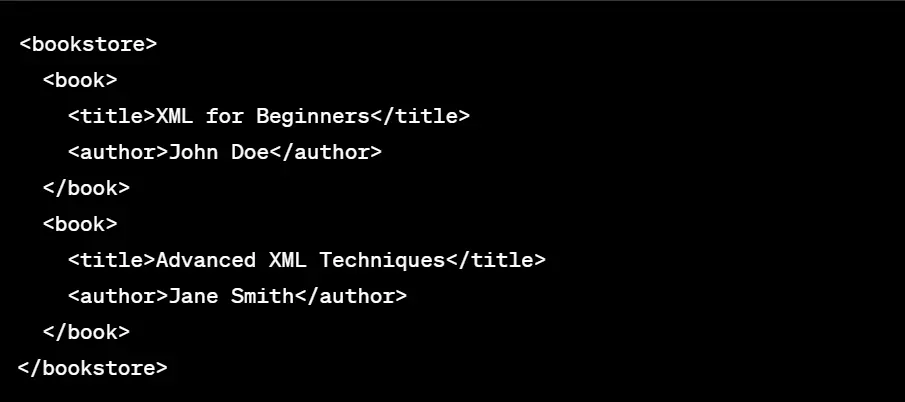
XML Formatting Best Practices for Improved Data Readability
In the realm of data management and interchange, XML (Extensible Markup Language) is a tried-and-true standard. XML's flexibility and human-readable structure make it a go-to choice for representing structured data. However, as your XML documents grow in complexity, maintaining readability becomes paramount. That's where XML formatters and checkers come into play. In this comprehensive guide, we'll delve into XML formatting best practices and explore the benefits of using XML formatter checkers, including free online XML formatter checkers, to enhance the legibility of your XML data. Check out BeBran's Free XML Formatter Tool.
The Significance of XML Formatting
Before we delve into the best practices and tools, let's emphasize why XML formatting is crucial:
- Readability: Well-structured XML is more accessible and easier to comprehend for humans. This is especially valuable in collaborative development and debugging scenarios.
- Error Detection: Properly formatted XML makes it easier to spot errors, such as missing closing tags or attribute mismatches.
- Maintainability: Neatly formatted XML is simpler to update and modify, particularly when dealing with large or intricate data structures.
Now, let's explore XML formatting best practices and see how XML formatter checkers can assist in achieving these goals.
XML Formatting Best Practices
1. Consistent Indentation
Maintain a consistent indentation pattern for nested elements. Typically, an indentation of 2 or 4 spaces (or one tab) is used for each level of nesting. This indentation style enhances readability by visually representing the document's structure.
Example:
2. Proper Line Breaks
Place line breaks after opening and closing tags, making it easier to distinguish individual elements. Proper line breaks help prevent long lines of code that are hard to read.
Example:
3. Use Descriptive Tag Names
Choose descriptive and meaningful tag names that convey the purpose of the element. This makes the XML document self-explanatory and reduces the need for extensive comments.
Example:
4. Attribute Formatting
When defining attributes for an element, format them consistently. You can place attributes on separate lines or list them inline, but maintain the chosen style consistently throughout the document.
Example
5. Self-Closing Tags
For empty elements (elements with no child content), consider using self-closing tags. This not only saves space but also makes the structure more apparent.
Example
6. Maintain Consistent Case
Be consistent with the case of tag names and attribute names. It's a good practice to choose either lowercase or uppercase for tag and attribute names and stick to it.
Example
7. Commenting
Include comments in your XML document to provide context or explanations, especially for complex or non-obvious parts of the data structure.
Example
Free Tools: Free Paraphrased Tool Online | Free English Converter Tool Online | Free Word Counter Tool Online
Benefits of Using XML Formatter Checkers
XML formatter checkers, also known as XML beautifiers, are tools that automatically apply formatting best practices to your XML code. Here are some advantages of using them:
- Time-Saving-XML formatter checkers can quickly and efficiently format large XML documents, saving you valuable time and effort compared to manual formatting.
- Consistency-These tools ensure that your XML documents adhere to consistent formatting rules throughout, eliminating the risk of human errors or inconsistencies.
- Error Prevention-Many XML formatter checkers can identify and correct common XML syntax errors, ensuring your document is structurally sound.
- Readability Improvement - By applying consistent formatting, XML formatter checkers enhance the readability of your XML documents, making them more accessible for you and your collaborators.
- Focus on Content- Automated formatting frees you from the chore of manual XML formatting, allowing you to concentrate on the content and structure of your data.
Online XML Formatter Checkers
Now, let's take a closer look at some online XML formatter checkers that offer these benefits for free:
1. BeBran’s Free XML Formatter
Key Features:
- Free and user-friendly online tool. Check out BeBran's Free XML Formatter Tool.
- Automatically formats XML according to best practices.
- Offers an option to validate XML.
- Provides encoding and decoding capabilities.
2. OnlineXMLTools XML Formatter-
Key Features:
- Completely web-based and free to use.
- Automatically formats XML for improved readability.
- Provides a simple and intuitive interface.
3. BeautifyTools XML Formatter-
Key Features:
- A free online tool for XML formatting.
- Cleans up and organizes XML code for readability.
- Allows downloading of the formatted XML file for offline use.
Conclusion
XML formatting best practices are essential for maintaining the readability, error-free structure, and maintainability of your XML documents. While manual formatting can be time-consuming and error-prone, online XML formatter checkers offer a convenient solution. Check out BeBran's Free XML Formatter Tool. Each tool has its unique features and advantages, such as user-friendliness, ad-free experiences, and the ability to download formatted files. By incorporating these best practices and utilizing XML formatter checkers, you can ensure that your XML documents are well-organized, readable, and ready to facilitate seamless data exchange and management. Say goodbye to XML formatting hassles and hello to clearer, more efficient data representation!
Explore More: RGB vs. Hex: Understanding Color Codes and When to Use Them | The Role of QR Codes in Contactless Transactions: A Post-Pandemic Analysis
Frequently Asked Questions
1. What is an XML formatter tool?
An XML formatter tool or software that helps ensure that XML documents adhere to proper formatting rules and standards. It verifies the structure, indentation, and syntax of XML files.
2. Why is XML formatting important, and how does a formatter checker help?
XML formatting is essential for readability and maintaining well-organized data. A formatter checker automates the process, ensuring consistency and identifying formatting errors to enhance document quality.
3. What are the common formatting issues in XML documents?
Common formatting issues include inconsistent indentation, improper line breaks, mismatched tag cases, missing or extra spaces, and incorrect attribute formatting.
4. How does an XML formatter checker detect and correct formatting errors?
XML formatter checkers typically analyze the document's structure and apply predefined formatting rules to correct errors. They may also provide suggestions or highlight issues for manual correction
5. Are XML formatter checkers available as standalone software or online tools?
XML formatter checkers are available in both forms. Standalone software is installed on a local machine, while online tools are web-based and accessible via a browser.



